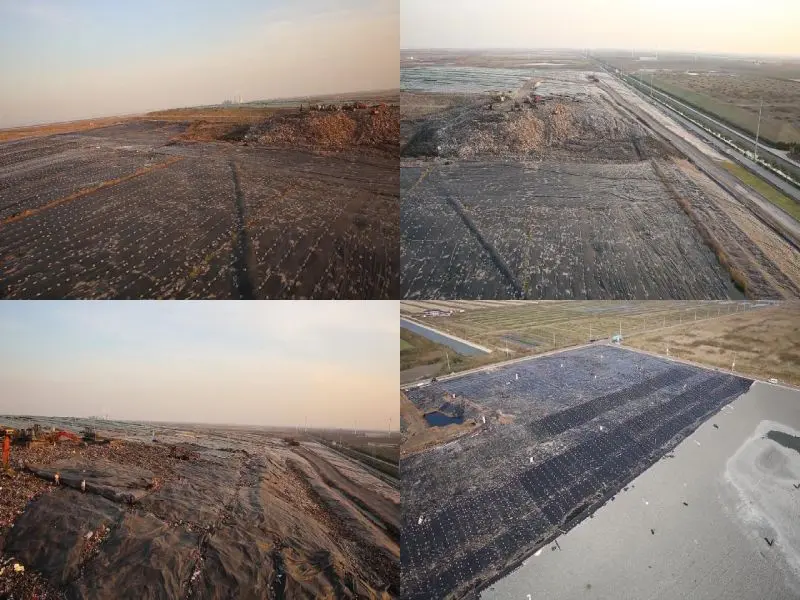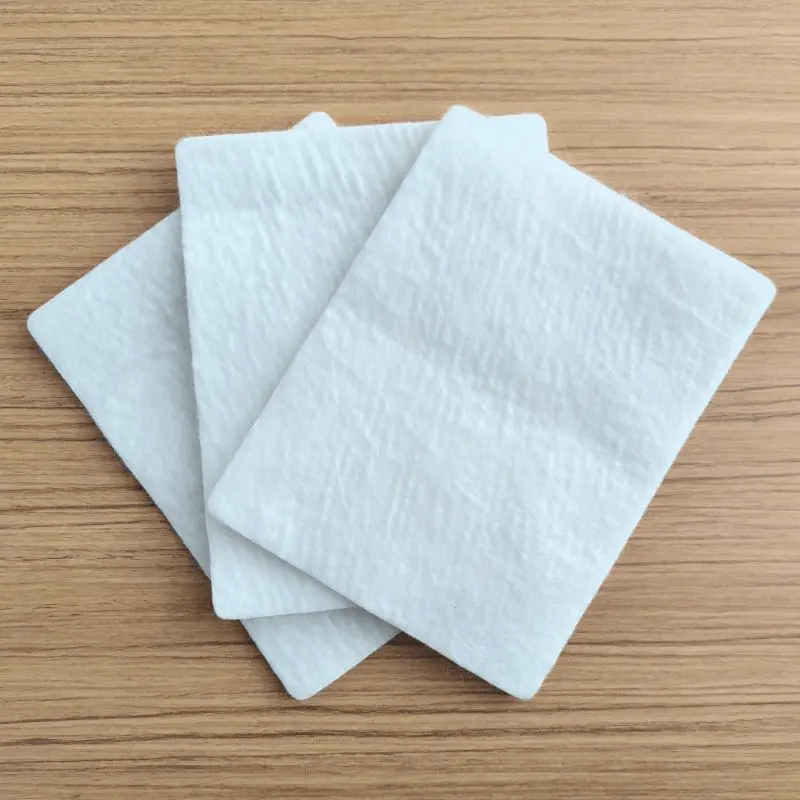Geotextiles are a game-changer in road construction, offering several benefits that significantly enhance the durability, performance, and lifespan of roads. Here’s a simplified look at the advantages of geotextiles in road construction:
545422.webp)
Advantages of Geotextiles in Road Construction
1. Reinforced Stability
Geotextiles act as a stabilizing force, preventing soil erosion and offering structural support to the roadbed. By reinforcing the soil layers, they improve the stability and load-bearing capacity of roads, reducing the risk of cracks and deformation.
2. Enhanced Drainage
These textiles facilitate proper water drainage, preventing water accumulation within the road layers. This helps in maintaining the road's structural integrity, as excess water can weaken the foundation and cause damage.
3. Soil Separation and Filtration
Geotextiles create a barrier between different soil layers, preventing them from mixing and maintaining their individual characteristics. They also act as a filter, allowing water to pass while preventing the passage of fine particles. This separation and filtration process contribute to long-term road stability.
4. Improved Road Performance
By adding strength and durability to the road structure, geotextiles enhance the overall performance of roads. They reduce rutting, cracking, and other damages caused by traffic loads and environmental factors, resulting in smoother and more resilient roads.

5. Cost-Efficiency
While initially adding to the construction cost, geotextiles help in reducing long-term maintenance expenses by extending the road's lifespan. Their ability to mitigate potential damages saves money that would otherwise be spent on repairs and rehabilitation.
6. Environmentally Friendly
Geotextiles contribute to environmentally sustainable road construction practices. Their use reduces the need for additional materials, minimizes soil excavation, and promotes eco-friendly solutions for road infrastructure.
7. Erosion Control
Geotextiles serve as a barrier against soil erosion, particularly on slopes and embankments. By stabilizing the soil and preventing erosion, they protect the road's structural integrity and adjacent landscapes, reducing maintenance needs and potential hazards caused by soil displacement.
265818.webp)
8. Ease of Installation
Their lightweight and flexible nature make geotextiles easy to handle and install. This simplifies the construction process, saving time and labor costs. Moreover, their adaptability to various terrains and soil conditions makes them versatile for use in different road construction projects.
9. Versatile Applications
Geotextiles offer versatility in road construction beyond stabilization. They find application in various road layers, such as subgrade reinforcement, separation between different materials, and as a cushioning layer, enhancing the overall performance and longevity of the road.
10. Resistance to Biological and Chemical Factors
These textiles are resistant to biological degradation and chemicals present in the soil, providing long-term durability. They maintain their structural integrity even in harsh environmental conditions, ensuring the road's stability over time.
11. Compliance with Standards
Geotextiles comply with industry standards and regulations for road construction. Their usage is supported by engineering specifications, ensuring reliability and consistency in their performance across different road projects.
12. Durability in Various Conditions
Geotextiles exhibit exceptional durability in diverse environmental conditions. They withstand temperature fluctuations, moisture levels, and soil composition variations, ensuring consistent performance over time. This durability contributes to the longevity of the road, reducing maintenance and repair needs.
13. Traffic Management and Safety
By enhancing road stability and reducing wear and tear, geotextiles aid in managing traffic flow more efficiently. Roads constructed with geotextiles experience fewer surface irregularities, enhancing driving comfort and safety for vehicles and passengers.
14. Flexibility and Adaptability
One of the key advantages of geotextiles is their flexibility to adapt to changing conditions. They accommodate ground movement, settling, and deformation without compromising their structural integrity, maintaining road stability over the long term.
15. Research and Innovation
Ongoing research and technological advancements in geotextile materials and applications continually improve their performance. Innovations in manufacturing techniques and material compositions further enhance their effectiveness and broaden their scope in road construction.
687602.webp)
16. Global Adoption and Recognition
Geotextiles have gained widespread recognition and acceptance in the construction industry globally. Their proven track record in enhancing road performance has led to their widespread adoption in various countries, highlighting their effectiveness and reliability.
17. Contribution to Sustainable Infrastructure
Their ability to improve road durability, reduce maintenance requirements, and minimize environmental impact aligns with sustainable infrastructure development goals. Geotextiles play a pivotal role in creating resilient and environmentally friendly road networks.
18. Reducing Maintenance Costs
Geotextiles contribute significantly to reducing long-term maintenance costs of roads. By minimizing soil erosion, stabilizing the subgrade, and enhancing overall road performance, they decrease the frequency of repairs and maintenance, saving substantial costs for road authorities and governments.
19. Accelerated Construction Time
The use of geotextiles often speeds up the construction process. Their ease of installation and adaptability help expedite road-building procedures, reducing construction timeframes. This rapid deployment benefits both project timelines and associated costs.
20. Retaining Structural Integrity
In challenging terrains or areas prone to soil movement, geotextiles help maintain the road's structural integrity. They counteract soil settlement, thus preventing road surface deformities, cracks, and unevenness that commonly arise in such conditions.
21. Longevity in Harsh Environments
Geotextiles exhibit remarkable resilience in harsh environmental conditions. Whether facing extreme temperatures, heavy rainfall, or high traffic loads, they maintain their structural integrity, ensuring roads remain sturdy and reliable over time.
22. Supporting Sustainable Development Goals
The use of geotextiles aligns with sustainable development objectives. They contribute to creating more durable, resource-efficient, and environmentally friendly road infrastructure, fostering sustainable economic growth and environmental conservation.
23. Mitigating Soil Erosion
Geotextiles effectively control soil erosion, particularly on slopes and embankments. This erosion control helps preserve the road's foundation, minimizing the risk of landslides, and protecting surrounding ecosystems from soil runoff.
585970.webp)
24. Adaptable to Various Road Types
Geotextiles are adaptable to different road types, including highways, rural roads, and urban streets. Their versatility allows engineers to apply them in various layers of road construction, enhancing stability and performance across diverse road networks.
The advantages of geotextiles in road construction are multifaceted, contributing significantly to the durability, strength, and sustainability of roads. Their role in mitigating various road-related issues while offering cost-effective, environmentally friendly solutions continues to revolutionize modern road-building practices worldwide. As technology advances, further innovations in geotextile materials and applications are expected to further enhance road construction practices in the future.

897.webp)
942.webp)
237.webp)